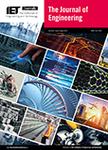版权所有:内蒙古大学图书馆 技术提供:维普资讯• 智图
内蒙古自治区呼和浩特市赛罕区大学西街235号 邮编: 010021

作者机构:Peking Univ Shenzhen Grad Sch Key Lab Machine Percept Shenzhen Peoples R China Shenzhen Skyworth RGB Elect Co Ltd Shenzhen Peoples R China
出 版 物:《JOURNAL OF ENGINEERING-JOE》
年 卷 期:2020年第2020卷第13期
页 面:303-309页
学科分类:12[管理学] 1201[管理学-管理科学与工程(可授管理学、工学学位)] 08[工学]
基 金:National key R&D program of China [2018YFB1308600, 2018YFB1308602] Specialized Research Fund for Strategic and Prospective Industrial Development of Shenzhen City [ZLZBCXLJZI20160729020003]
主 题:image registration computer vision image recognition inspection object detection neural nets printed circuits RBCNN method deep neural networks HRIPCB challenging dataset PCB defects detection inspection printed circuit board synthesised PCB dataset 6 kinds classification registration tasks reference-based method end-to-end convolutional neural network RBCNN approach pixel-by-pixel processing
摘 要:To cope with the difficulties in inspection and classification of defects in printed circuit board (PCB), many methods have been proposed in previous work. However, few of them publish their datasets before, which hinders the introduction and comparison of new methods. In this study, HRIPCB, a synthesised PCB dataset that contains 1386 images with 6 kinds of defects is proposed for the use of detection, classification and registration tasks. Besides, a reference-based method is adopted to inspect and an end-to-end convolutional neural network is trained to classify the defects, which are collectively referred to as the RBCNN approach. Unlike conventional approaches that require pixel-by-pixel processing, the RBCNN method proposed in this study firstly locates the defects and then classifies them by deep neural networks, which shows superior performance on the dataset.